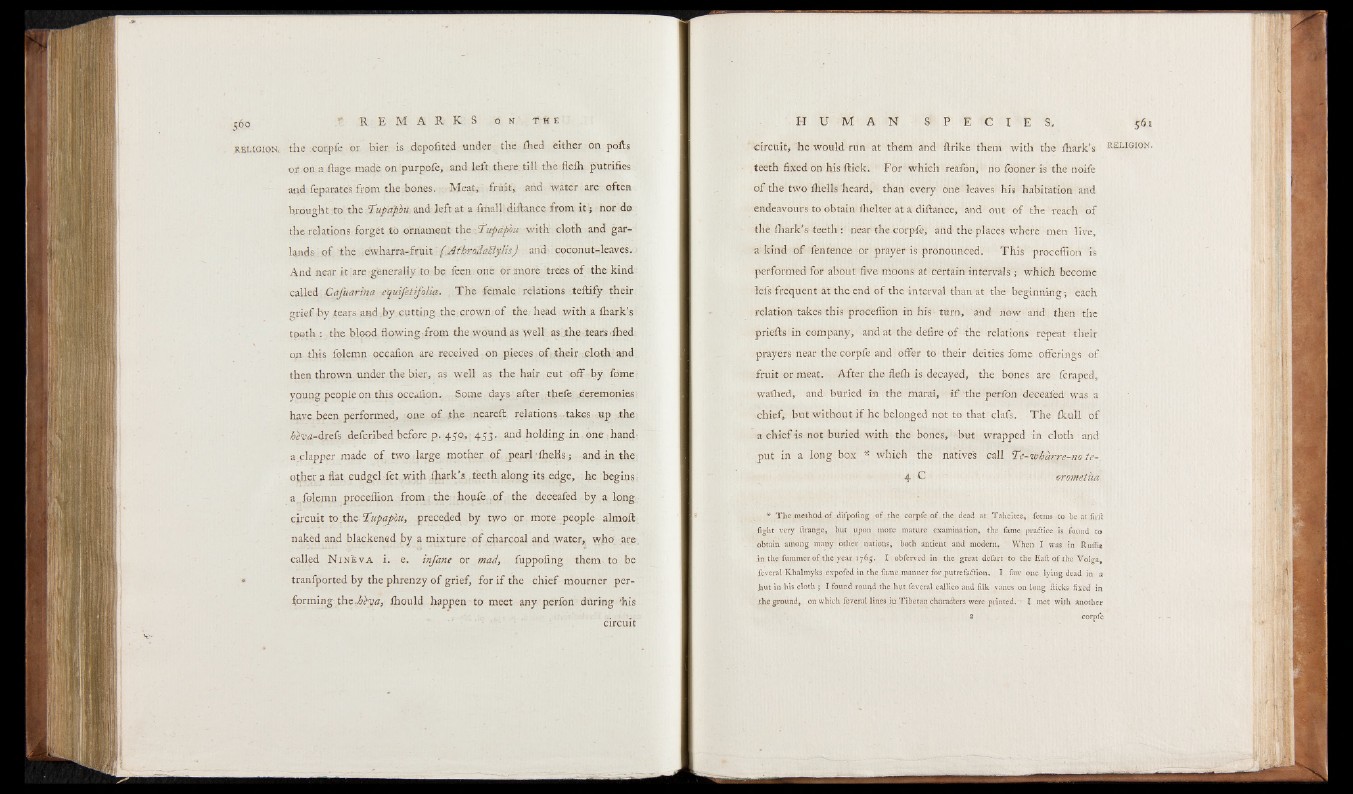
s.6°.
RELIGION,
t R E M A R K S ON THE'
the corpfe or bier is depofited under the flied either on ports
or on a liage made on purpofe, and left there: till the fleih putrifies
and feparates from the bones. : Meat,-' fruit, and water are often
brought:to thtfupapou and left at a fmall'diftance from i t ; nor da
the relations forget to ornament the'.fupdpou with cloth and garlands
o f the ewharra-fruit (.Athro'da&ylis) and coconut-leaves.
And near it are generally to be feen one orimore trees o f the kind
called Cafuarina equifetifolia. T h e female relations teftify their
grief by .tears .and by cutting thecrown o f the. head with a ihark’s
toath : the blood flowing-from the wound as well as the tears ■ fhed
on this folemn occafion are received on pieces o f their cloth and
then thrown under the bier, as well as the hair cut off by fome
young people on this occafion. Some days after thefe .ceremonies
have been performed, one qf .the neareft relations takes up the
heva-ikefe defcribed before p. 450, 453. and holding in ..one hand-
a clapper made o f two large mother o f pearl 'fhelis; and in the
other a flat cudgel fet with ihark’a teeth along its edge, he begins.
a. folemn proceffion from the houfe o f the deceafed by a long
circuit to .the. liupapou, preceded by two or more people almoft
naked and blackened by a mixture o f charcoal and water, who' are
called N ine v a i. e. infane or mad, fuppofing them, to be
tranfported by the phrenzy o f grief, for i f the chief mourner per-
ffirmingthe-^ew, Ihould happen to meet any perfon during his
circuit
H U M A N S P E C I E S . j6 t
circuit, he would run at them and ftrike them with the fhark’s Re l ig io n .
teeth fixed on his flick. For which reafon, no fooner is the noife
o f the two fhelis heard, than every one leaves his habitation and
endeavours to obtain thelter at a diftance, and out of the reach o f
the ihark’s teeth : near the corpfe, and the places where men live,
a kind o f fentence or prayer is pronounced. This proceffion is
performed for about five moons at certain intervals which become
lefs frequent at the end of the interval than at the beginning; each
relation takes this proceffion in his turn, and now and then the
priefts in company, and at the defire o f the relations repeat their
prayers near the corpfe and offer to their deities fome offerings of
fruit or meat. After the flefh is decayed, the bones are fcraped,
walhed, and buried in the mara-i, i f the perfon deceafed was a
chief, but without i f he belonged not to that clafs. Th e fkull of
a chief is not buried with the bones, but wrapped in cloth and
put in a long box * which the native's call Te-wbarre-no te-
4 C ■ vrometua
•* The method of difpofing of the corpfe of the dead at Tahcitee, ■ feems to be at firft
fight very ftrange, but upon more mature examination, the fame practice is found to
obtain among many other nations, both antient and modern. When I was in Ruflia
in the fummer of the year 1765. I obferved in the great dcfart to the Eaft of the' Volga,
feveral Khalmyks expofed in the fame manner for putrefaction. I faw one. lying dead in a
hut in his cloth ; I found round the hut feveral callico and filk vanes on long flicks fixed in
.the ground., on which feveral lines in Tibetan characters were printed. I met with another
2 . corpfe